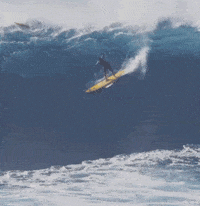Maybe you’re a surfer, or perhaps you want to begin surfing. Either way, you should know that if you have dry eyes, it’s best to skip out on surfing until you have them treated.
Dry eyes, or dry eye syndrome, can be dangerous on their own if left untreated. If you add the irritants of wind, saltwater, and the sun to the mix, you can really damage your eyes.
Keep reading to learn how surfing can make dry eyes worse and what you can do about it.
Sunlight Can Dry Out Your Eyes
Sunny days are perfect for surfing, but they also can be bad for your eyes. You should always wear sunglasses when out on a sunny day to protect your eyes from harmful UV Rays.

But it can be hard to keep sunglasses on your face the whole time when you’re surfing. Not only can sunlight dry out your eyes further, but it can also cause pterygium.
Pterygium is a fleshy growth that grows from the corner of your eye toward the center and your cornea. It’s an extra layer of tissue that can grow over your cornea, be painful, and make it harder to see. It can also irritate dry eyes even more.
Pterygium is known as surfer’s eye because it’s common in surfers, so it could be a real risk for you. Combine that with chronic dry eye, and surfing could cause a lot of eye irritation and pain!
Wind Can Dry Out Your Eyes
Even if it’s not particularly sunny out, you can still have issues with your eyes when surfing. The wind may be great for huge waves, but it isn’t great for your eyes.
Even with protective glasses, it’s hard to keep your eyes protected at all times from the effects of wind. Not only can debris and sand get in your eyes, but the wind itself can have a drying effect that can make your dry eyes even worse.
And you aren’t going to get proper moisture from the water, either, because you’re in the ocean. Also, wind and the sand and debris it can carry are the other leading cause of pterygium besides the sun.
Saltwater Can Irritate Your Eyes
Saltwater, particularly ocean water, can be very irritating. While it’s not as harmful as chlorine, it can still cause eye irritation.

This irritation can also dry out your eyes, which can worsen dry eye syndrome. Combine that with sunlight and wind, and you may have a tough time even being able to see.
Irritated Eyes Make it Harder to See
Even taking away the long-term effects of dry eyes and exacerbated dry eye syndrome, just having irritated eyes can make it much harder to see. Surfing can be dangerous even in mild conditions.
So being able to see what you’re doing when in the water is vital. If you can’t see correctly, you could end up doing damage to your whole body, not just your eyes!
You’ll Increase Your Risk for Cataracts
Surfer’s eye and UV damage from frequent surfing can increase your risk for cataracts. Dry eyes also increase your risk and make your eyes even more vulnerable to other long-term eye issues.
One long-term eye condition to be particularly mindful of is eye cancer. Chronic dry eyes, which surfing can lead to, can increase your chances of developing it.
Treating your dry eye before hitting the waves will help you avoid developing these eye conditions at a young age.
Any Athletics Are Difficult with Dry Eye
Even if you take surfing out of the mix, any kind of intense sport can be difficult with dry eyes. Exertion increases your risk for dehydration which can contribute to dry eyes or trigger dry eye syndrome.
Any sport you play outside also exposes you to sunlight and wind. While wearing sunglasses may be easier on land, you can still get UV damage if your eyes are already vulnerable.
If you’re an athlete, it’s best to find a way to treat your dry eyes before throwing yourself into your sport.
Dry Eye Treatment

Treatment for dry eyes can be simple. You may be experiencing dry eye because of your contacts or a dry environment.
Making simple environmental adjustments can sometimes ease your dry eye symptoms. Some simple suggestions include:
- Using extra contact solution
- Taking an occasional break from contacts
- Adjusting your environment by lowering the AC
- Using a humidifier to keep more moisture in the air
In some instances, these simple steps can be enough to ease dry eye symptoms. Proper nutrition can also help, especially getting more omega-3 fatty acids.
You can get this vital nutrient from fish oil or flaxseed oil supplements. Although, it’s more effective to obtain it directly from the food you eat.
Eat plenty of fish, or, if you don’t eat fish, you can find omega-3 in walnuts, chia seeds, hemp seeds, and more! Often, combining diet and environmental adjustments alleviates dry eyes.

Using artificial tears from the pharmacy on occasion can also help to ease symptoms. Sometimes, though, you need additional treatment. If these simple changes don’t work, other therapeutic options exist, especially if you have meibomian gland dysfunction or MGD.
Treatment for MGD
MGD is a frequent cause of dry eye syndrome. It occurs when the meibomian glands that produce the oil film in your tears don’t work correctly.
Oil in your tears prevents them from evaporating off your eyes. Your tears need to sit on top of your eyes for a period to deliver hydration and nutrients.
Blocks in your oil glands allow your tears to evaporate too quickly. This situation simultaneously results in an overproduction of tears and chronic dry eyes.
Luckily, there are various treatments for MGD. They all aim to unclog your meibomian glands so the oil can flow onto your eyes again.
Whatever the cause of your dry eye, you should see an eye care professional. They can recommend the proper treatment for you!
Schedule an appointment at Sugiki-Portis-Yim in Honolulu, HI, so you can get back to surfing again!





